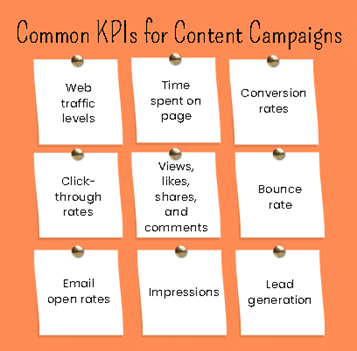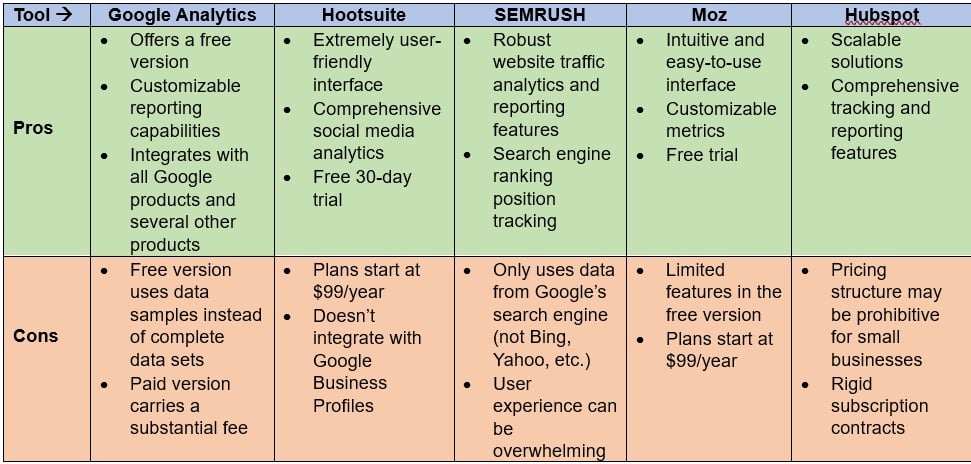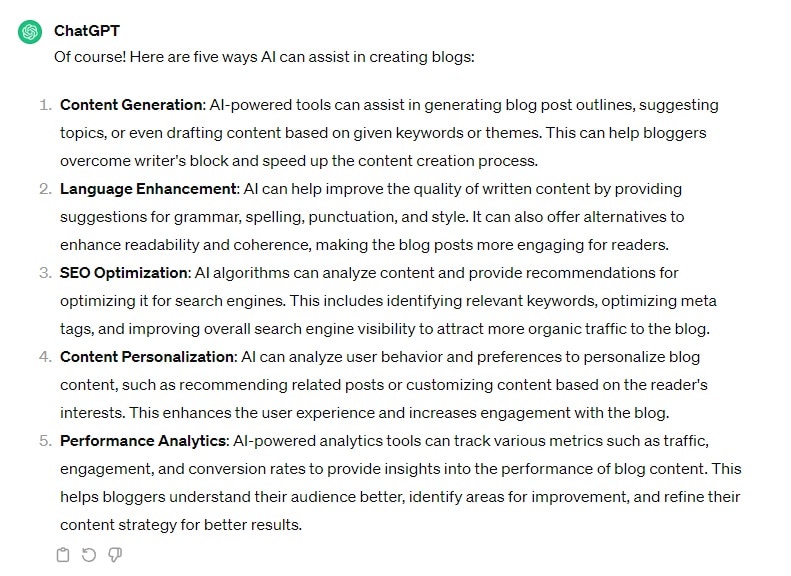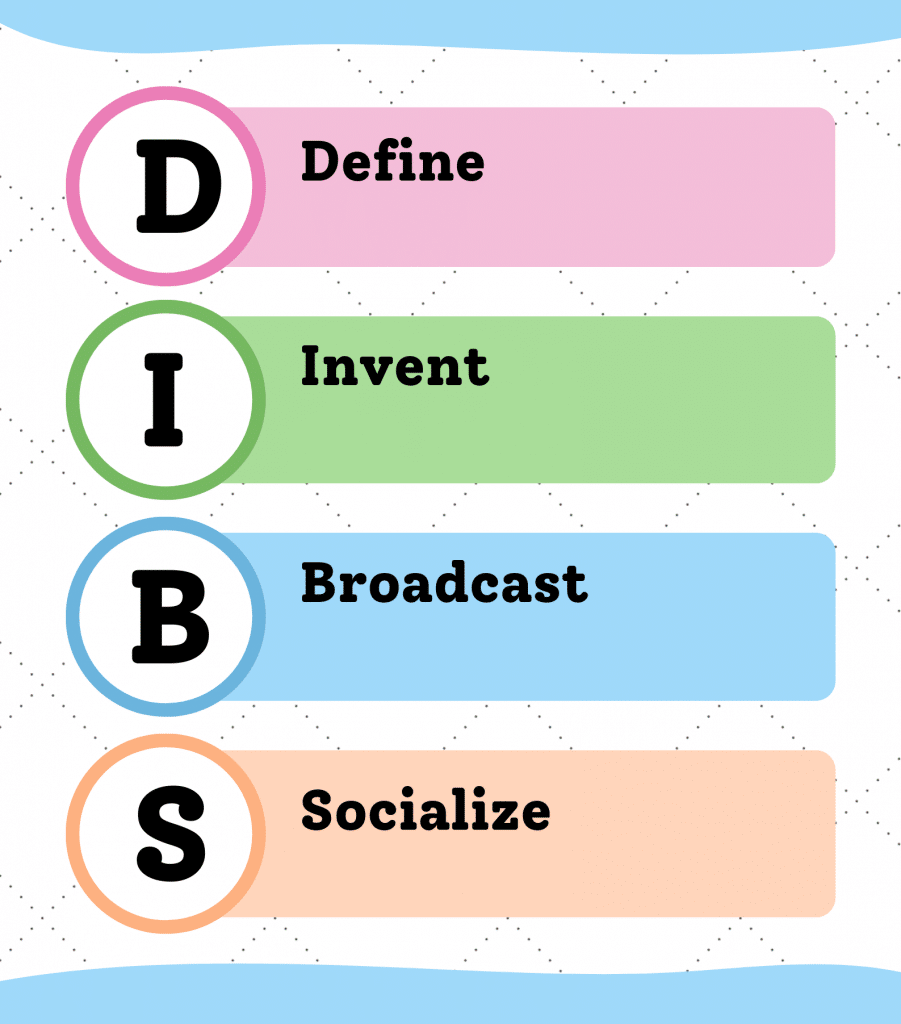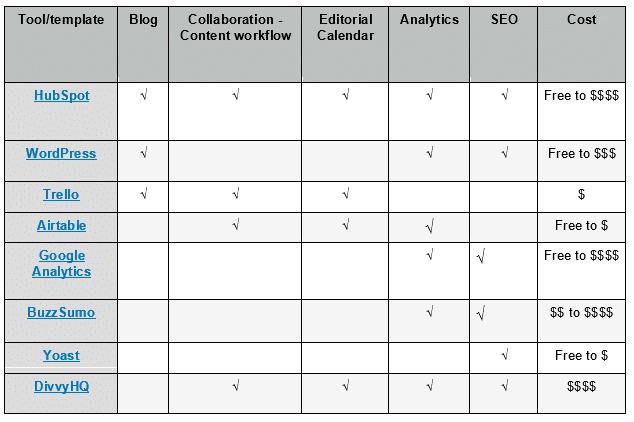When it comes to content marketing, you may think that content creation is the key element to focus your efforts on. You’re not wrong, exactly. However, finding your target audience is just as imperative if your content is going to impact your business the way you want it to.
Identifying and understanding your audience is a fundamental element of content marketing success.
But what is a target audience? And how do you identify yours and use content marketing to show exactly what your product or service can do for that group of people?
What is a Target Audience?
You may have heard of a target market before. This is a broader group that may potentially use your product or service. A target audience is a subset of your target market—a more defined and specific group of people whom you can “target” with content marketing campaigns.
A target audience is composed of those most likely to use your product or service. The factors that determine its membership can include age range, geographic location, interests, income, education level, and more.
For example, if you create content about an Orlando, Florida steakhouse, people who live in or are likely to visit Orlando and patronize eateries with similar price points and menu offerings are your target.
Why Do I Need a Target Audience for Content Marketing?
You may be asking “Why do I even need a target audience? What if my product or service is for anyone who wants to use it?”.
In an ideal world, trying to appeal to everyone can be tempting, but that kind of utopia doesn’t exist. Everyone has specific needs; that’s something marketing departments understand.
Ask any marketing expert and they’ll tell you that nailing down a target audience is crucial to zeroing in on your customers. A good audience profile will affect both your marketing and content decisions.

Your efforts to appeal to a target audience can affect financial decisions, the growth of your customer base, even your standard business practices. When you know who your content is meant for, you can tailor it to attract them.
Working with a content marketing agency to define your most likely customers may be the best way to get the proverbial ball rolling.
How To Identify Your Target Audience
Here are some tried-and-proven approaches, all useful to help identify your target audience:
1. Create Personas
To nail down who your target audience is and isn’t, create personas to define those who have needs your company can best fulfill.
A persona is a fictional (or somewhat fictional) representation of your target audience or a part of it. This extremely detailed picture takes a deep dive into the traits of your ideal customers. Details may include their values, goals, likes, dislikes, motivations, and fears.
There are many ways to create a persona, and how you do so depends on your business objectives. Be as specific as you can when creating your persona. A few key details to get you started are:
- Name
- Demographics (age, location)
- Values (are they family-focused, career-minded, or both?)
- Work and/or life goals
- Social media platform preference (if any)
- Likes and dislikes
- Challenges they face that you can help them overcome
- Motivations
- Fears
- A personal style that brings them to life
The details you can add to the personas you create are limitless; stick to the ones that make the most sense for your purposes. You don’t need to know about shoe size if you’re selling office supplies.
Onno Halsema, CEO of Contentoo, stresses the importance of creating a buyer persona.
“Without a clear view of who your target audience is and what makes them tick, you’ll have to rely on guesswork when developing your content strategy.”
Halsema emphasizes refining personas as you learn more about your audience to develop a more strategic and data-driven marketing plan.
Once a persona is created, it can act as a template for other personas you make in the future. With multiple customer personas, it will become easier to create specific content for each of them.
2. Identify Pain Points
Pain points are problems that customers need to solve. Sometimes, they don’t even realize yet that they have these problems. They are the annoyances, burdens, or time wasters that you know your product or service will solve.
Here is where content marketing comes in. Through your content, show how what you offer can solve a problem.
First, figure out what category the pain point falls into. There are four basic categories:
- Productivity – The “time waster”
- Financial – Budget, cost, or sales-related
- Process – Issues with how products or services work
- Support – A need for information, instructions, suggestions
Next, jot down questions to define pain points specifically affecting the personas and their dilemmas. These are a few questions to start with:
- What is the pain point? (Define the frustration the persona has. E.g., software is too complicated)
- How does this pain point get in the way of their goals?
- What is the easiest way to solve this pain point?
- Which solution makes sense, cost-wise, for your personas?
Tutorials or surveys work well to pinpoint both the pain and the potential gain for the customer when it’s alleviated. Other effective techniques include case studies, focus groups, or customer interviews.
Also, pay attention to social media comments about your company, products, or services. Keep a regular log of customer questions or issues to develop a clear picture of what they want. This can also help you stay on top of issues raised by customers.
Consider exactly how to turn a pain into a gain for one of your created personas. Putting yourself in their (figurative) shoes can help you understand a pain point.
3. Look at Your Competition
Check out what your competition does. See what they offer customers. Dive into their social presence. Look at anything you can find about them. See what they do that creates results like those you want to achieve.

When exploring their social media platforms, look at their content and followers.
Your current target audience may or may not differ.
Discovering how and why they have reached their target audience can help you better understand how to reach yours.
Here are some ways to do competitive research:
- Choose a few top competitors who offer something similar to your offerings.
- Dive into their social media accounts. See what they post, how often, and what kinds of comments their followers post.
- Sign up for any enewsletters to see what type of news they send to subscribers.
- Check out their website for additional content like blogs, FAQs, specific offers, etc.
- Set up a news alert for their press releases or news pieces about them.
Discovering why customers engage with another company or use their product can help you improve your content marketing as well as your offerings.
With this information in hand, you can put an imaginative twist on your own content that highlights reasons to choose your business over others.
4. Get Ultra-Specific with Your Content Marketing
Is it really that important to define a target audience for content marketing? You better believe it!
With audience personas defined, you can start planning content marketing campaigns that encompass content that will resonate with them.
Make sure you segment your personas according to the ways they prefer to be marketed to. A younger audience may not like to receive email newsletters, but instead prefer a short explanatory video. The methods matter just as much as the message.
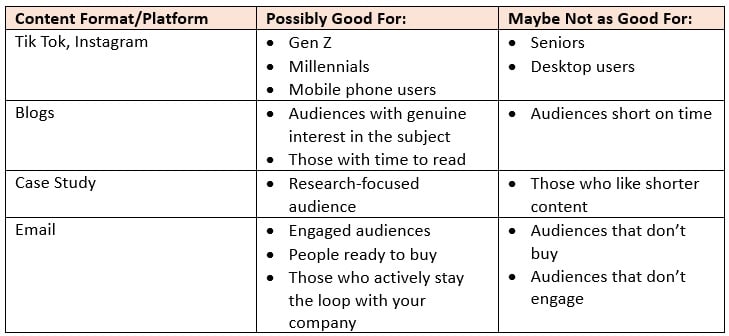
Jocelyn Wady, Communications Specialist for the Alberta Association of Architects, shares her expertise on how to use content marketing to reach a target audience.
“A more direct appeal may necessitate an email marketing campaign or other tactics like collaborating with fellow industry organizations. Learning the target audience of any organization comes with experience and research, so don’t be afraid to ask questions and use your colleagues as resources.”
Jocelyn Wady
Appealing to a target audience in a friendly, helpful, conversational way is key to getting their attention. Timing your content well is just as important.
Picture the steakhouse mentioned earlier. If you send out an email on Sunday night at 11:30pm promoting a ribeye special, it probably won’t get the most optimal attention.
A Wednesday or Thursday night email, though, could catch diners who have a taste for ribeye in time to influence their weekend plans.
5. Creating the Content
Create exciting, personalized content for your target audience that captures their attention. You can personalize content based on location, age group, purchase history, even the latest news.
Weaving current events into content marketing seamlessly can be very effective.
As Wady expresses it,
“One of the most enjoyable parts about managing social on behalf of an organization [is] the challenge of finding trending or popular topics and making [them] relevant to your organization. For example, for Martin Luther King Day, I shared an article about the Martin Luther King Jr. Memorial Library (MLKL), designed by a famed architect Ludwig Mies van der Rohe. During winter solstice, I shared monuments around the world that civilizations built in honor of the solstice.”
The type of content you create will depend on the personas your organization wants to reach.
E-newsletters, blogs, short videos, funny social media posts, infographics – the list of content options is almost endless. Choose a few to try out and see how they resonate with your audience.

You can always change elements of your content to keep things interesting. Changing the color of a social media post or the format of your blog can keep them fresh. Try something new, see what works, and always record your progress.
6. Make Sure Content Reaches the Target Audience
Content marketing aims to reach the right audience with the right content at the right time. So how do you know if you’re doing all those things?
Analytics can show you which content an audience interacts with, supplying you with information about your website traffic, social media followers, sales, and more. You can use this to better plan and schedule content. There is a variety of analytic software available.
Analyzing data and statistics doesn’t happen overnight. Allow your content marketing campaign some time to get results. Then, define the parameters of your data; for instance, Q1 web traffic vs. Q2 web traffic.
Specialized pages can help you connect with customers. With a customer login page on your website, you can offer promotions, allow visitors to “like” products, list their purchases, or keep track of their browsing history. They can get specialized offers or notifications if something they’re waiting for comes back into stock.
Customer activity can also give you direction in creating personalized, targeted emails. Automated email flows based on a customer’s activity on your site allow you to offer just what they’re looking for, from sales to new products and much more.
Check comments, likes, shares, and reposts on your social media platforms and blogs. Ask subscribers to reply to e-newsletters to boost personal engagement. A target audience that is engaged is likely to share the content they enjoy with similar people.
So, what if it’s not working?
What can you do if your content marketing campaign is well-researched, yet isn’t reaching the target audience? You’ve done all the steps correctly, but you’re not quite hitting the mark. What next?
“Sponsored content is a good option if you know where your audience lives,” Wady explains. “For example, LinkedIn is, by far, the busiest social media channel for my organization. When we put out a call for speakers for an upcoming conference and we were lacking applications, we tried a sponsored LinkedIn post and had great results.”
Performing keyword research, ensuring your content is SEO-friendly (uses relevant keywords, meta tags, headings, etc.), and working with industry experts are a few more ways to make sure you do start hitting your audience bullseye.
Final Thoughts
The number of ways to study, understand, and reach your target audience is almost endless. Tweak your content marketing strategies and personas as your business, and your target audiences, grow and change.
The time you take to identify and focus on your target audience members so you can connect with them is worthwhile. Nothing in business is foolproof, but the results of developing a deeper understanding of your audience may surprise you.



